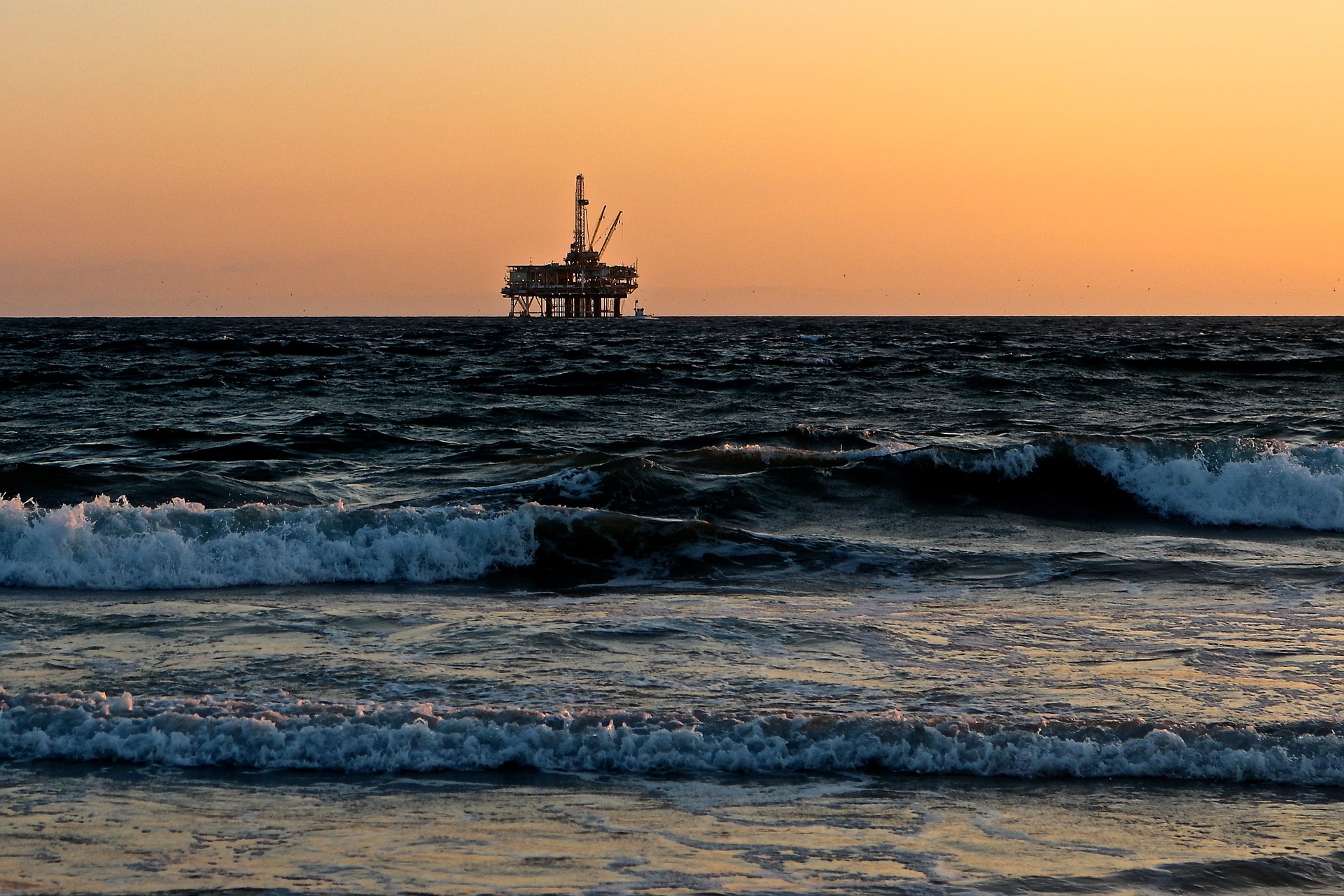
Big Oil’s Public Lands and Water Leases Shell Game
by Nicole Ghio, fossil fuels program manager, and Jayson O’Neill, fossil fuels consultant
When the Biden Administration paused all new federal oil and gas leasing in January 2021, it was met with a swift and coordinated pushback from the industry and its allies. The decision to end a broken system that rips off taxpayers and causes over a quarter of all U.S. greenhouse gas emissions made big oil and gas corporations and oily politicians act like the sky was falling.
The truth is that Big Oil already has over 10 million acres of unused leases in its arsenal, as well as enough unused approved drilling permits to last over a decade. If developed, this existing stockpile of leased public resources would lock in at least a half century of climate change-inducing emissions. Not only does the industry want cheap access to our public lands, leaving taxpayers to clean up its mess, but the sector is also stockpiling leases in order to artificially inflate its bottom line and appear more desirable to banks and investors.
Remember, big oil and gas funded front-groups quickly activated their typical and tired disinformation campaign regarding the initial leasing moratorium. Front-groups like the fledgling Western Energy Alliance (WEA) even engaged and funded academic sympathizers to cook-the-books on a widely criticized study expounding on fictitious impacts of ending public oil and gas leasing. It’s no secret that this disinformation campaign was used to bolster the industry’s lawsuit challenging the moratorium. While the administration is appealing an adverse ruling, the Interior Department decided to resume massive lease sales instead of waiting for the appeal to play out, forfeiting Biden’s campaign promise to “ban new oil and gas leasing on public lands and waters.”
Adding insult to injury, the administration is still relying on outdated and flawed environmental analysis in green lighting these oil and gas mega-sales, some of which are even larger than originally proposed by the Trump administration. Meanwhile, the sector is again posting massive profits despite their alarmist rhetoric about the impact of the leasing pause. But a closer look into a broken system with a perverse incentive that the oil and gas sector is exploiting to desperately acquire more cheap public leases is worth exploring.
Big Oil and Gas Exploit A Broken System
With 245 million acres of public lands and some 700 million acres of subsurface mineral assets administered, the Bureau of Land Management (BLM) is the largest public natural resource and lands agency in the federal government. These lands are owned and held in trust by the Bureau to be managed for multi-use for the benefit of and in the public’s interest. BLM is guided in this process by the 1976 Federal Land Policy and Management Act (FLPMA) and the Mineral Leasing Act of 1920.
FLPMA directs the Bureau in land management and policy decisions regarding when, where, what, and how federal lands are leased and managed. Big oil and gas corporations nominate potential lease acres to state offices, requesting the Bureau put them out to bid. Corporations then bid on parcels that can be either competitive, pushing per acre prices higher, or noncompetitive, where per acre leases go for the statutorily minimum rate of just $2 per acre or less. Some 30 percent of all public lands leased acres have been sold for $2 per acre or less, which is a massive giveaway to the oil industry at the taxpayers’ expense and adversely impacts states and local communities.
The centuries old Mineral Leasing Act establishes the royalty rate fossil fuel and mining corporations pay when they develop the public’s natural resources. The royalty rate of public lands oil and gas development of 12.5% has remained unchanged since the law’s inception in 1920, representing another massive taxpayer-backed subsidy for oil and gas corporations. Who else besides Big Oil hasn’t seen prices rise since 1920? Big Oil’s royalty rates for drilling on our public lands are well under the private market rate and even the rates set by most state governments (as high as 25% in Texas). Revenue from federal lease sales and royalties are shared with state governments. Despite industry’s rhetoric, only nominal revenue trickles down into state coffers (shared revenue comprises just 3.28% of all state spending in the oil-heavy state of New Mexico).
In another blow to taxpayers, bonding rates for oil and gas development haven’t been altered since 1951, allowing corporations to post bonds of just $150,000 for its entire public lands portfolio. This has created a massive socialized clean-up and orphaned well liability cost for taxpayers in the range of $280 billion. In effect, industry pays rock-bottom rates to destroy our public lands, and then leaves taxpayers to clean up the mess.
Stockpiling Cheap Public Leases Scheme
But this is only the tip of the iceberg. There are more hidden reasons why oil and gas corporations activate their armada of lobbyists to Capitol Hill anytime the idea of fixing or ending this broken system is even broached.
It only takes a short trip down memory lane to recall the George W. Bush administration’s secretive energy task force led by then Vice President Dick Cheney, which was formed to develop a national energy policy designed to help the private sector. The outcome of the task force’s policy recommendations included a Security and Exchange Commission (SEC) rule called the Modernization of Oil and Gas Reporting.
The intent of the rule on paper was simple enough: give investors and shareholders clearer insight into an oil and gas corporation’s purported natural resource reserves that, in part, determine a corporation’s asset holdings and overall market worth. The more oil and gas reserves held by a corporation, the more the corporation would be valued in trading and attractive to potential investors. Simple enough and hard to argue against providing more transparency.
The reality of the new rule was much more nefarious. A detailed deep dive analysis on the topic done by the Center for American Progress eliminates the problem that still plagues public leasing. The fundamental takeaway buried within the 2008 SEC rule was the broadened definition of “proved reserves,” allowing oil and gas corporations to report speculative public leases to shareholders and investors as actual assets, thus increasing the corporation’s market valuation.
This signal move opened a proverbial public leasing land grab that established a perverse incentive to do what is exactly occurring to this day: oil and gas corporations are stockpiling cheap public leasing assets to boost their balance sheets. This multi-level marketing ponzi scheme has real world implications and consequences for financial markets, shareholders, investors, and the environment.
Conclusion
Biden is about to break his promise to end new lease sales in a big way. This week, his administration will hold a massive 80+ million acre Gulf of Mexico lease sale, the largest in U.S. history. In early 2022, hundreds of thousands of acres of Western public lands will be on the auction block for Biden’s first onshore lease sale. Don’t be fooled. Despite what so many big oil and gas corporations or their paid-mouthpieces say, these lease sales are not as much about American energy production as they are about increasing the market valuation by gobbling up cheap public leases to support a corporation’s bottom-line.
Until our elected officials and decision-makers address this perverse incentive that allows big oil and gas to manipulate the market, the sector will lock in decades of greenhouse gas emissions, should all reserves be developed. This will shroud future generations with another existential threat to their future, all in the name of today’s manipulated big oil and gas profits.
Related Posts
Ways to Support Our Work

Read Latest News
Stay informed and inspired. Read our latest press releases to see how we’re making a difference for the planet.

See Our Impact
See the real wins your support made possible. Read about the campaign wins we’ve fought for and won together.

Donate Today
Help power change. It takes support from environmental champions like you to build a more healthy and just world.